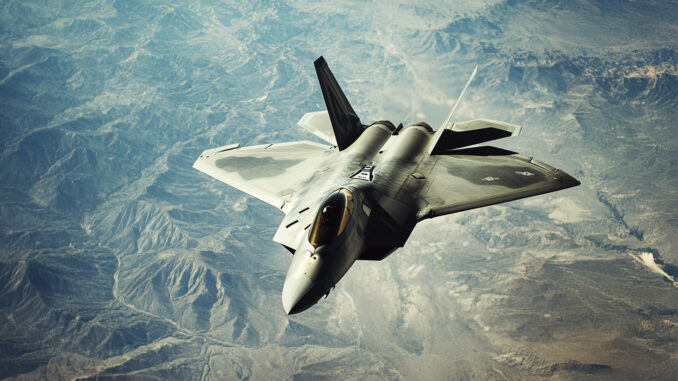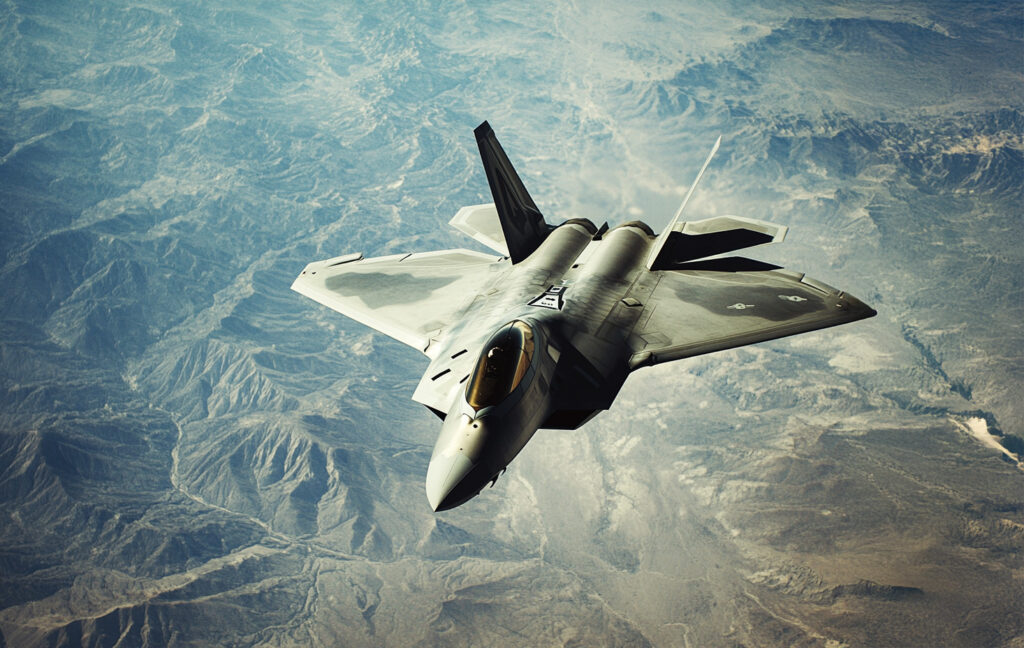
High altitude allows fighter jets to optimise their performance, reducing aerodynamic drag and increasing their range and combat effectiveness.
Flying at high altitude offers fighter aircraft significant strategic and tactical advantages. At altitude, the density of the air is lower, thus reducing aerodynamic drag, enabling these aircraft to fly faster while saving fuel. Fighter jets also benefit from a better radar detection range and the ability to strike more distant targets. Flying high also puts them in a position of energy superiority, allowing them to descend more quickly to engage targets, while minimising vulnerability to ground-to-air threats.
Reducing aerodynamic drag at high altitude
Aerodynamic drag, or air resistance, is a key factor influencing the performance of fighter aircraft. The higher an aircraft flies, the rarer the air becomes. Air density decreases rapidly with altitude, which reduces drag. For example, at an altitude of 12,000 metres, the density of the air is about 30% of that at sea level. This means that a fighter jet’s engines have to work less hard to maintain a high speed.
Reducing aerodynamic drag means more efficient fuel consumption. Aircraft such as the F-22 Raptor, which can fly at altitudes in excess of 15,000 metres, benefit from this reduction in drag. At these altitudes, they can reach cruising speeds in excess of 2,400 km/h without using their afterburners, optimising mission duration while minimising fuel consumption.
This saving is crucial for long-duration missions, enabling aircraft to cover greater distances or stay on patrol longer without needing to refuel. Flying high therefore improves the operational autonomy of fighter aircraft, while maximising their reaction speed.
Energy superiority and tactical advantages
One of the basic principles of modern air combat is the notion of energy superiority. An aircraft flying at a higher altitude has more potential energy. This means that it can dive rapidly towards a target, converting this potential energy into speed, which gives it a significant tactical advantage.
In practical terms, a fighter aircraft flying at 12,000 metres can rapidly descend towards an enemy aircraft at a lower altitude. Thanks to this difference in altitude, it gains speed more quickly, allowing it to manoeuvre more flexibly. For example, the Eurofighter Typhoon, capable of operating at altitudes in excess of 16,000 metres, can exploit this energy superiority to outmanoeuvre its opponents in aerial combat.
The tactical advantage of high altitude also lies in the fact that it makes the aircraft less vulnerable to ground-based air defence systems, such as surface-to-air missiles, whose effectiveness diminishes as vertical range increases. Aircraft flying at very high altitudes are often beyond the direct range of these systems, which reduces their vulnerability during reconnaissance or attack missions.
Optimisation of radar and detection systems
Fighter aircraft flying at high altitude also benefit from a better radar range. At high altitudes, the curvature of the Earth and obstacles on the ground have less effect on detection systems, enabling on-board radars to detect targets further away. When flying at 15,000 metres, a fighter aircraft can extend its detection range beyond 400 kilometres, offering greater reaction time to potential threats.
This is particularly beneficial for interception or air superiority missions, where early detection of targets is crucial. For example, the advanced radar systems on the F-35 Lightning II are optimised for high-altitude operations, enabling targets to be located and tracked well beyond visual range. This enables pilots to make informed decisions and anticipate enemy movements, maximising operational effectiveness.
Altitude also enables fighter aircraft to operate with complete stealth. As the range of ground-to-air radars decreases with height, the chances of being detected by the enemy decrease, giving air forces a decisive advantage in situations where stealth is essential.

Consequences of high altitudes on systems and logistics
Despite the advantages of flying at high altitudes, there are constraints on onboard systems and logistics. At these altitudes, temperatures can drop below -50°C, which affects the performance of electronic components and engines. Fighter aircraft must therefore be equipped with systems specially designed to withstand these extreme conditions. For example, jet engines must be able to operate efficiently in environments where atmospheric pressure is extremely low.
In addition, pilots operating at high altitude are subjected to difficult physiological conditions. Oxygen becomes increasingly scarce as altitude increases, requiring the use of sophisticated life support systems to maintain adequate oxygenation. Flight suits and cockpit pressurisation systems are essential to enable pilots to fly safely at these altitudes.
Logistically, using aircraft capable of flying at such high altitudes requires rigorous maintenance and cutting-edge technology, which increases operating costs. An aircraft such as the F-22 can cost more than €30,000 per flying hour, largely due to the maintenance requirements associated with operating at high altitude.
Flying at high altitude offers fighter jets a wide range of strategic and tactical advantages, including drag reduction, energy superiority, radar range and stealth. However, it also requires complex logistical and technological preparation to manage the extreme conditions associated with these altitudes.
War Wings Daily is an independant magazine.